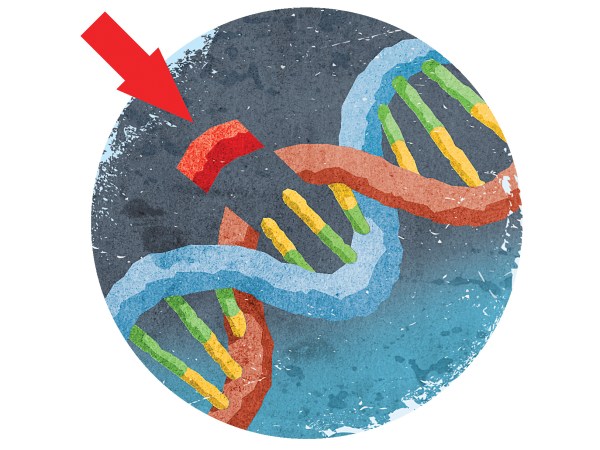

John F. Kennedy was known for his youth and energy, but in the decades since his death we’ve realized that there was more to the story: The 35th President of the United States actually battled an impressive collection of medical problems. Among these was agonizing back pain that led Kennedy to undertake four surgeries.
“This pain affected him nearly continually from his undergraduate years at Harvard until the day of his assassination,” a pair of physicians wrote earlier this month in the Journal of Neurosurgery: Spine. They have examined Kennedy’s medical records to create a detailed report of the youngest elected President’s pain and how it shaped his career—and possibly even his death in Dallas on November 22, 1963.
It’s not clear what exactly was awry, and it’s likely that multiple problems were at play. “The imaging studies they used were very primitive,” says coauthor Justin Dowdy, a neurosurgeon at Hot Springs Neurosurgery Clinic in Arkansas. “It’s such a difficult thing to tease out, even with modern-day imaging knowledge, the exact cause of many patients’ back pain.”
He and his colleague, T. Glenn Pait, of the University of Arkansas for Medical Sciences’ Jackson T. Stephens Spine and Neurosciences Institute in Little Rock, inspected notes penned by Kennedy’s physicians and images of his spine. They found no evidence of congenital abnormalities or fractures in Kennedy’s spine, contrary to previous speculation.
But, as with other famous figures, understanding Kennedy’s medical history can prove illuminating. Pouring through JFK’s medical records drove home how difficult it must have been for him to juggle a political career and events such as the Cuban Missile Crisis with his gnawing, ongoing back pain. “His public image was very discordant with the amount of pain he was in,” Dowdy says. “He wasn’t a young fit healthy guy—he was possibly the 20th century’s sickest President.”
A world of hurt
Back pain was just one of Kennedy’s maladies; he had a sickly childhood, nearly dying from scarlet fever at one point. Later, he faced stomach, colon, and prostate problems, among other ailments. Kennedy also suffered from Addison’s disease, in which the adrenal glands can’t produce enough of the hormones that help the body respond to stress and regulate blood pressure and blood sugar.
Kennedy’s back pain started when he was a student at Harvard University, possibly brought on by a football injury in 1937. “It could have just caused fairly minor structural damage, whether a mild bulging disc or some early degenerative changes, that unfortunately with our backs can spiral out of control if it doesn’t recover right away,” says Dowdy.
A few years later, Kennedy tried to enlist in the Army and Navy, but was disqualified by his back and other health issues. In 1941, though, his ex-ambassador father’s connections helped him secure a commission in the U.S. Naval Reserve. Then in 1943, a Japanese destroyer rammed Kennedy’s boat in the Solomon Islands, cutting it in half. The survivors swam for a nearby island, Kennedy towing a wounded crew-member with him—clenching a strap from the man’s life jacket between his teeth. After more grueling swims and help from two Solomon Islanders, the crew was eventually rescued.
After that, however, Kennedy’s back pain intensified. He underwent his first back surgery in 1944, which left him with severe muscle spasms. Ten years later, Kennedy was a senator and his back problems were intense enough that he almost constantly relied on crutches. In 1954 he opted to undergo a second operation. His other health problems made this spinal fusion surgery risky, and afterwards he developed a urinary tract infection that put him in a coma. Later on, he developed an infection at the surgical site that reportedly oozed blood and pus constantly. Given his inability to heal, another operation was arranged to remove the plate he’d received during his second surgery.
Kennedy improved after that, but developed an abscess along the surgical scar on his back. He underwent a final, less invasive operation in 1957, after which his back pain ebbed for a time. But a few months after becoming President, Kennedy again hurt his back during a tree-planting ceremony in Canada in May 1961. He had another relapse in 1963, a few months before his assassination.
Did JFK’s back problems help kill him?
Some scholars speculate that the lumbar brace Kennedy wore towards the end of his life played a role in his death. After Lee Harvey Oswald shot him in the neck, the argument goes, the brace may have pulled Kennedy back into an upright position—placing him back into Oswald’s sights for the second, fatal shot. Perhaps without the brace, he would have slumped forward—and just might have survived. But there’s no way to know, Dowdy and Pait concluded. Still, they wrote, Kennedy’s long struggle with back pain may have helped alter history.
So what were Kennedy’s back issues? Different physicians had different ideas, Dowdy says. “Some diagnosed him with a bulging disc and essentially a pinched nerve, sciatica type pain from that bulging disc.” Another diagnosed Kennedy with an unstable lumbosacral joint, a common cause of low back pain.
Whatever the reasons for his pain, Kennedy’s surgeries didn’t bring him much relief (leading him, at one point, to try shots laced with methamphetamine). Today, a few things have changed. We have better imaging, including CT scans and MRIs, to help figure out what must be fixed. “We would have a much better idea of his actual structural changes now,” Dowdy says. “Maybe it would have prevented him from having surgery—or if he’d needed surgery we’d have many more options.”
On the other hand, maybe Kennedy would have had a similar experience if he’d lived today. “It’s the same problem we have now, diagnosing and treating back pain, as his surgeons and physicians were struggling with 80 years ago,” Dowdy says. “Despite our surgical technologies, our imaging capabilities…it’s still an art.”
In good company
Sometimes, we can glean historical insights from investigating the medical problems that famous figures dealt with. Any letters and medical records left behind can highlight the challenges and complications that may have been simmering in the background of key historical events, Dowdy says.
JFK was special, he admits. Kennedy lived recently and still commands the country’s interest, and scholars have plenty of access to his records. But there have been many other medical investigations into famous people from the past.
One popular target is Jane Austen. The British author died in 1817 at age 41. Scholars have since pored over her remaining letters in search of clues to what killed her. In 1964, a surgeon proposed that Addison’s disease was the culprit, citing the skin coloration that Austen herself described as “black and white and every wrong colour.” The disease can cause darkening of the skin, but not everyone is convinced by this explanation. More recently, other scholars have proposed lymphoma and tuberculosis as possible causes of death, and even speculated about accidental arsenic poisoning.
Then there’s Polish composer Frédéric Chopin, who suffered from poor health long before he died at age 39 in 1849. Chopin’s death certificate pins the blame on tuberculosis, but there’s speculation that he actually suffered from cystic fibrosis. This inherited disease causes thick mucus to build up in the lungs and pancreas, and could explain Chopin’s breathing problems, diarrhea, enlarged heart and a few other symptoms. Today, people with cystic fibrosis have a life expectancy of around 37 years. In Chopin’s time, the disease had not even been discovered; it would have been extraordinary for the composer to have survived so long. Chopin’s heart is preserved in Warsaw, and researchers have long hoped to take a tissue sample to test for evidence of the disease. But, though a team of scientists exhumed the organ in 2014, they were allowed only to take photos, and the mystery of Chopin’s death endures.
These kinds debates can span centuries. Julius Caesar, who died in 44 BC, suffered from vertigo, dizziness, and limb weakness. The Greek historian Plutarch later described Caesar’s epileptic fits in his biography. Epilepsy remained the dominant diagnosis for hundreds of years, although others have suggested migraines and seizures related to malaria or a parasitic brain infection. In 2015, a pair of physicians at Imperial College London reviewed the general and statesman’s symptoms and concluded that mini-strokes offer a more convincing explanation. Perhaps these strokes could account for Caesar’s collapse in the battle of Thapsus in 46 BC, as well as his reported depression and personality changes. “Whilst Caesar’s death ultimately derived from his assassination, the possible diagnosis of stroke during his life may offer some novel interpretations regarding several notable incidents during his time as a Roman leader,” the doctors wrote in the journal Neurological Sciences.
In most cases, we can’t decisively settle what ailed a person who is long dead. Still, probing the illnesses famous people struggled with, from antiquity to Kennedy’s time, can benefit those of us alive today. People like to know that others have shared their illness, whether it’s chronic back pain or a rare disease, Dowdy says. “Especially when famous people have it…it makes you know that you’re not alone.”















